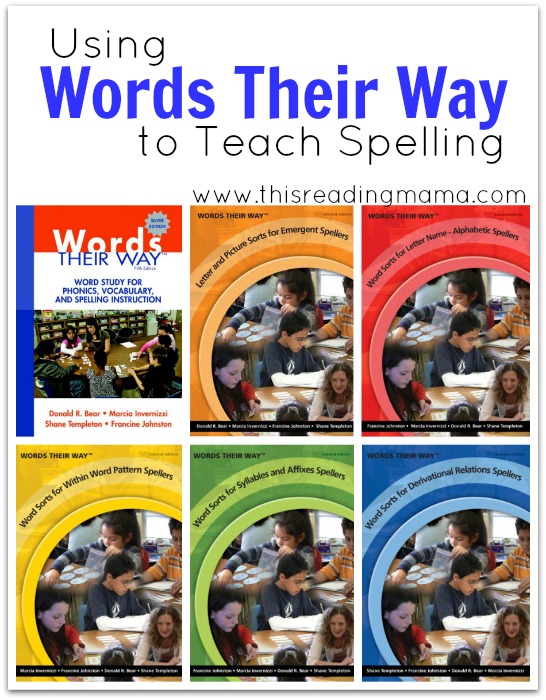
*This post contains affiliate links.
I was given the newest versions of these books by Words Their Way, but have used their products for over ten years to teach spelling. All opinions expressed are my own.
I am often asked by readers which level of the Words Their Way supplement word sorting book they should buy to teach spelling. So today, I’m diving into each of the Words Their Way supplement books to help you make an educated guess for your own spellers at home or in your classroom.
A Developmentally Appropriate Way to Teach Spelling
First, let me start by explaining that Words Their Way takes a developmental approach to spelling. In other words, the books are not labeled primarily by grade level, but by the characteristics of your child’s spellings and misspellings. In each stage, I will list a few characteristics of spellers and the kinds of word sorts you can find inside the each book.
A Hands-On Way to Teach Spelling
Secondly, the activities inside these books are mainly picture and word sorts, providing kids hands-on opportunities to learn and interact with sounds and words. The picture sorts focus on the sounds kids hear in words, such as beginning sounds in words. The word sorts focus on the patterns different words share within them, like comparing words with the short a pattern to words with the long a pattern.
Emergent Spellers
Emergent spellers are anywhere between birth and age 6. Most children that fit in this age have not had any formal lessons on spelling or phonics. They may have observed parents or older siblings as writers and mimic what they see. Children in this age may do some pretend writing.
Some researchers call this the pre-alphabetic or pre-phonetic stage because most emergent spellers do not understand how letters and their sounds help them spell words, especially in the beginning of the stage (from Words Their Way).
In the Letter and Picture Sorts for Emergent Spellers book, you will find lots of pre-reader activities, such as:
- rhyming and syllable sorts based on nursery rhymes and songs
- letter sorts based on literature, such as the gingerbread man
- beginning consonant letter sounds pages with pictures
- assessment guides to help you zero in on the skills your child needs to focus on most
- “Notes for the Teacher”, which provides the background as well as lightly-scripted ideas for implementing the activities
Letter Name-Alphabetic Spellers
Letter Name-Alphabetic Spellers range from the time they begin formal instruction in phonics until about the second grade (between 5 and 8 years old). Early in this stage, as kids are taught their letter names, they begin to use the names of the letters to help them spell words. For example, they may associate W with the /d/ sound because the name double u starts with /d/.
Spellers in this stage typically begin spelling with only consonant sounds because they are more prominent or easier to “feel” in the mouth as the child says the word aloud (from Words Their Way Pre-K/K). As they progress through the stage, they begin to hear more letter sounds (phonemes) in words, including vowel sounds. Spellers in this stage might also be called semi-phonetic or partial alphabetic because they only represent some of the sounds in words as they write (from Words Their Way Pre-K and Words Their Way).
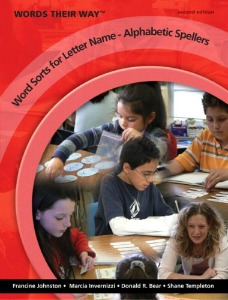 Within the Word Sorts for Letter Name-Alphabetic Spellers book, you will find:
Within the Word Sorts for Letter Name-Alphabetic Spellers book, you will find:
- review picture sorts for beginning sounds, word family sorts (with pictures)
- blends and digraph picture sorts, mixed word family sorts (for example, comparing -an, -in and -un words)
- short vowel word sorts, and an introduction to r-influenced words (such as bird or jar)
- “Notes for the Teacher”, which provides the background as well as lightly-scripted ideas for implementing the activities
Within Word Pattern Spellers
Spellers in the Within Word Pattern stage begin to “move away from the linear, sound-by-sound approach of the letter name-alphabetic spellers and being to include patterns or chunks of letter sequences” (Bear, et al. 2012).
The typical age of a child in this stage is 7 to 10 years old, starting approximately at the end of first grade and ending towards the end of third grade or beginning of fourth grade. In some cases, especially for struggling readers, spellers remain in this stage through middle school. Within Word Pattern Spellers begin to correctly spell vowel patterns within one-syllable words, first starting with short vowels and then moving onto long vowels and even some ambiguous vowels.
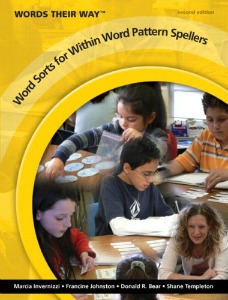 The Within Word Pattern Spellers supplement book contains:
The Within Word Pattern Spellers supplement book contains:
- picture sorts for short and long vowel sounds
- word sorts comparing the patterns of short vowel words and long vowel words with silent e
- common long vowel patterns, less common long vowel patterns (such as the long i in find)
- r-influenced vowel patterns
- diphthongs (such as oi) and other ambiguous vowel sounds (like comparing the sound of the oo‘s in good vs. food)
- instructions for how to demonstrate the sort, help the child sort the words, reflect on the sort, and extend the sort to real writing
Syllables and Affixes Spellers
Syllables and Affixes Spellers are typically ages 9 to 14 years and range from the upper elementary grades to middle school. This is the stage where spellers move from spelling patterns in one-syllable words to spelling patterns in multisyllabic words. This is also the stage where students begin to study word meanings, as they study prefixes and suffixes such as un– or pre-.
These spellers can spell most one-syllable short, long, and ambiguous words correctly, but confuse spellings where the syllables meet (such as when to double a letter before adding –ing or –ed) and some prefixes and suffixes (such as PER- for pre– or –SION for –tion). Info from Words Their Way.
In the Syllables and Affixes Spellers book, are:
- inflected ending sorts (such as adding -ed, -ing, -s, and -es onto words)
- syllable juncture patterns (understanding the reasoning behind the spellings of diner vs. dinner)
- vowel patterns in accented syllables
- vowel patterns in unaccented syllables
- less common consonant patterns (such as gh=f sound)
- affixes (beginning work on common prefixes and suffixes)
- instructions for how to demonstrate the sort, help the child sort the words, reflect on the sort, and extend the sort to real writing
Derivational Relations Spellers
Derivational Relations Spellers begin to connect spelling to meaning, as they focus on taking base words and deriving other words from that base word (for example, define to definition). Spellers can enter this stage as early as late elementary school, but most spellers in this stage are in middle school, high school, or adults. “The logic inherent in this lifelong stage can be summed up as follows: Words that are related in meaning are often related in spelling as well, despite changes in sound.” (from Words Their Way)
 In Word Sorts for Derivational Relations Spellers are sorts for:
In Word Sorts for Derivational Relations Spellers are sorts for:
- prefixes
- suffixes
- the suffix -ion
- vowel and consonant alterations (understanding how preside and president are related in both meaning AND spelling)
- Greek and Latin Elements (digging in deeper to vocabulary instruction, focusing on the meaning of word parts)
- advanced spelling-meaning patterns (such as when to end words with -ance or -ence)
The book, Words Their Way, is more of a textbook that lays a strong foundation for using word study to teach spelling. Hands-on game ideas for each level of spelling are included as well as spelling lists for TONS fo phonics skills, picture cards, and spelling inventories, which can help you pinpoint your child’s level of spelling development.
You Will Also Like
10 Days of Teaching Spelling Through Word Study
Helping Spellers Make Phonics Generalizations
<
~Becky
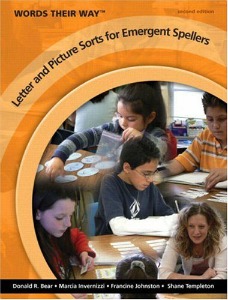
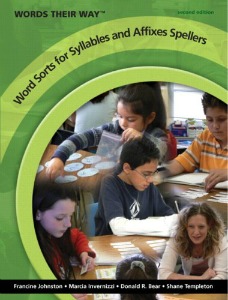

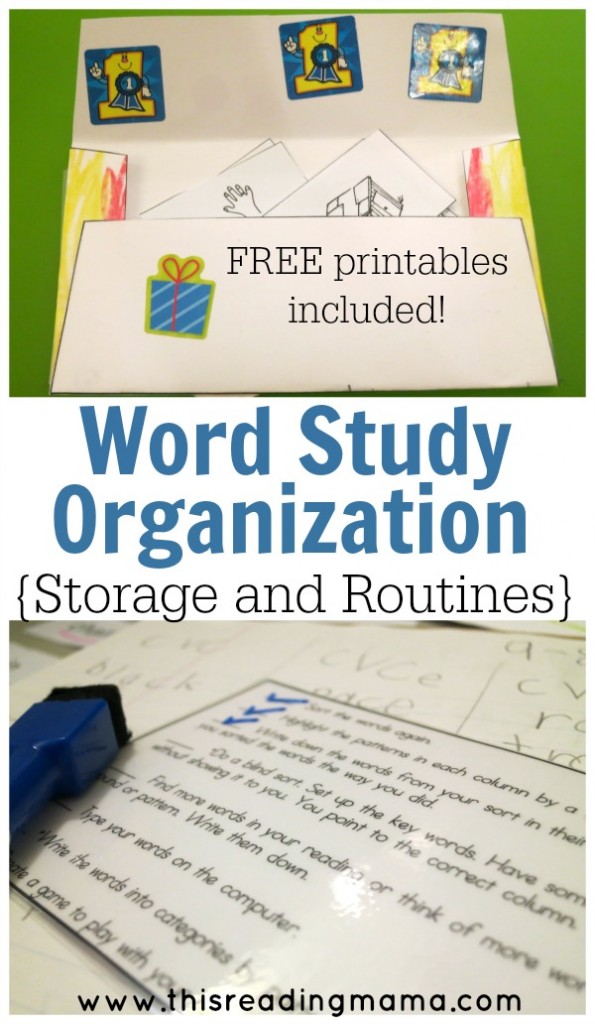
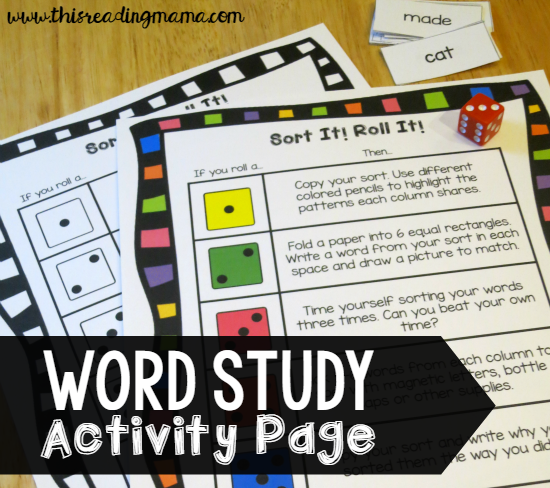
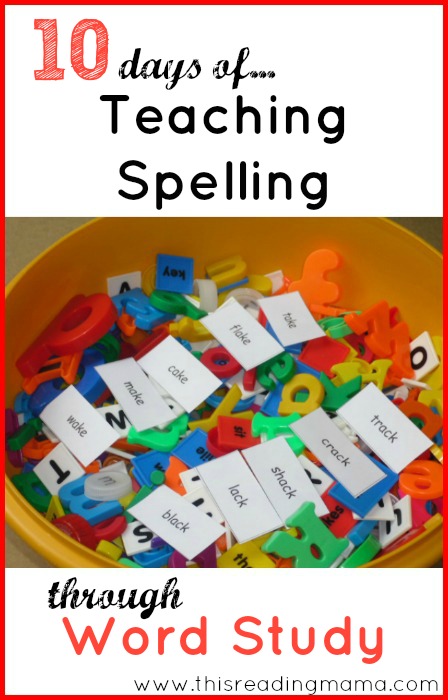
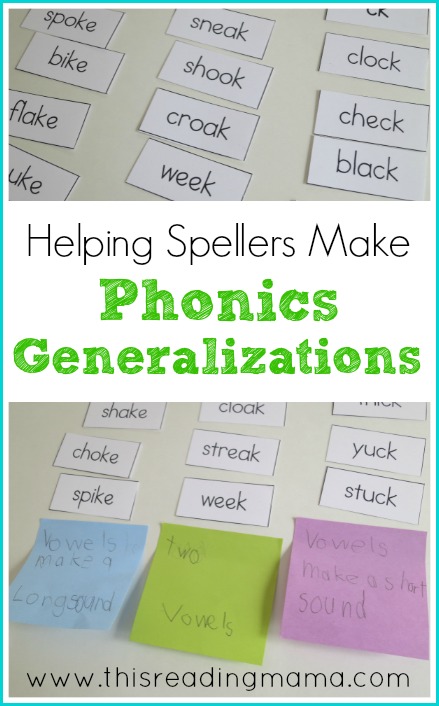
Hi Becky, thanks so much for your site- so many helpful tips & resources! Also I was excited to find your spelling e-book, which I’m currently reading. This is my first year homeschooling my boys (first grade & sixth grade) and I am still trying to figure out spelling…I’m generally a good speller, so I’ve never thought so much about it before!
I like the idea of word study (especially for my first grader) and have been poring over your recommendations, as well as The Measured Mom’s site. This is new to me, but it makes sense! I’m just trying to figure out how to do it. 🙂
I do have a question though: you advise to get the appropriate word sort book, and that the main book isn’t absolutely essential, however on The Measured Mom I noticed she does all her sorts from lists in the main text…do you think it matters which way I do it? Will I get enough guidance from the word sort books to know how to implement it? I like the idea of having the sorts more laid out, “ready to go”- but don’t want to miss out on crucial instructions. I haven’t been able to find much of a preview online, so it’s hard for me to really get a feel for what’s in each book.
Any thoughts would be appreciated! Thank you.
The supplemental books contain more of your “ready to go” sorts while the main book does provide amazing lists in the appendix. The main book has a lot of research and foundational information for word study {It reads more like a textbook}, but it also has game ideas that you can make in it. The newer edition (which I just received) is even better than the older edition because there’s a CD-rom with a toolkit, with even more things.
Hi Becky! I Love your website and refer to it often as I am working as a Reading Specialist this year. I was wondering what readers do you recommend using with word sort instruction. I wish there were like word sort stories somewhere that reinforce the spelling concepts.
The best ones I’ve found are the BOB Books for doing the word hunts and word patterns. Other than that, we just look through what we’re reading.
The first time I knew about Words their Way way here in your website. After reading your series about word study I decided to try it with my struggling reader. We are actually using the yellow book and absolutely love it. My son has improved a lot in spelling and reading as well. Thanks so much for sharing your knowledge with us!
I have some questions. Can I use Words Their Way as our stand alone spelling curriculum? Or I need to suplement it with another spelling program? If so, could you recommend a program or workbook with a similar approach as Words Their Way?
Elizabeth
That’s GREAT to hear! 🙂
You can use WTW as a stand-alone, but they suggest adding games or other activities to mix it up a bit, as doing word sorts every day might become a bit redundant. You might search on my blog, TpT, or The Measured Mom’s blog for free games that feature the phonics skill you are learning. Or it could be a simple as asking your son to create a game with the words to play together.
Look in the front of the book you have for other word study routines that you can use throughout the week, too.
Hi Becky! I also started using Words Their Way as my stand alone spelling for my 5 year old son because of your site! He can easily read digraph and blends and can do picture sorts with them as well. Where I am having trouble is having him be able to tell me what the blends and digraphs are blindly and then complete the assessment. If I provide the common blends and digraphs chart he has no problems. I am going to start doing more of the games to review. My question is…Do I move forward onto the next portion of the Alphabetic and Letter name spellers (red book) while continuing to review with blend and digraph blends? Or wait until he can spell them on his own before moving on? I’d really appreciate your advice!
The next book will review blends and digraphs within short vowel words, so I’d move on. I would throw in some extra review here and there with the picture sorts and maybe extra games, like these–> https://thisreadingmama.com/50-games-blends-digraphs/ Hope that helps!
I have a question similar to another commenter’s–the order of the sorts are different in the original/main WTW book than they are the colored books, and I’m wondering if you have any knowledge as to why or which is the preferred order for most kids. Thanks! 🙂
I haven’t looked at the colored books in a long time, but I’ve always used the original/main books. Either way, I think it would be fine though. I’ve worked with WTW (and personally know one of the authors) for too long to think they’d be arbitrary about the order in the colored books. Hope that helps!
I am a homeschooler, former ESL teacher in public school. I’ve come full circle with my youngest child back to this method being ideal at least for him as he needs a sense of exploration and ownership to enjoy learning and highly resists direct instruction, at least in skill based subjects. He at the least has a strong aversion to writing, but possible dysgraphia as well. I’m excited about getting back to word sorts with a deeper understanding of it, hopefully, that will give me confidence to implement it. My question is that I’m thinking of purchasing the latest version of Words Their Way coming out, but have some questions first about it. Does it go into depth about the patterns rules at each stage? I plan to let him try to come to them on his own, but want to be sure that I have the understanding necessary to help him and help him remember. For example, does it explain the Greek and Latin elements in the derivational stage? In other words, I feel like I have a understanding of the approach and teaching strategy, but I am not 100% confident that there are no gaps in my knowledge. So it will be worth it for me if it enhances both but perhaps not if it’s pure pedagogy assuming knowledge without explanation. And if not, do you know of a source (whether article website or book) for teachers that goes in depth about spelling rules patterns that will give confidence in this area?